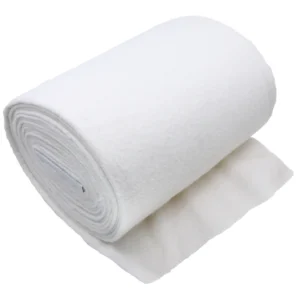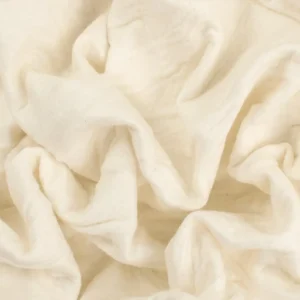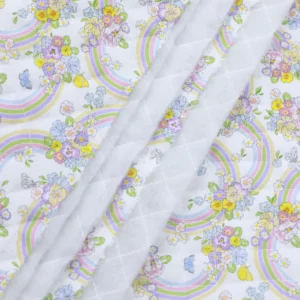Batting fabric, an essential material in the textile and craft industries, is known for its versatile applications and unique properties. Whether you’re a seasoned quilter, an upholstery professional, or someone interested in fabric crafts, understanding batting fabric can significantly enhance your projects.
This article delves into the world of batting fabric, covering its history, types, applications, characteristics, and more, providing a comprehensive guide for both novices and experts.
What is Batting Fabric
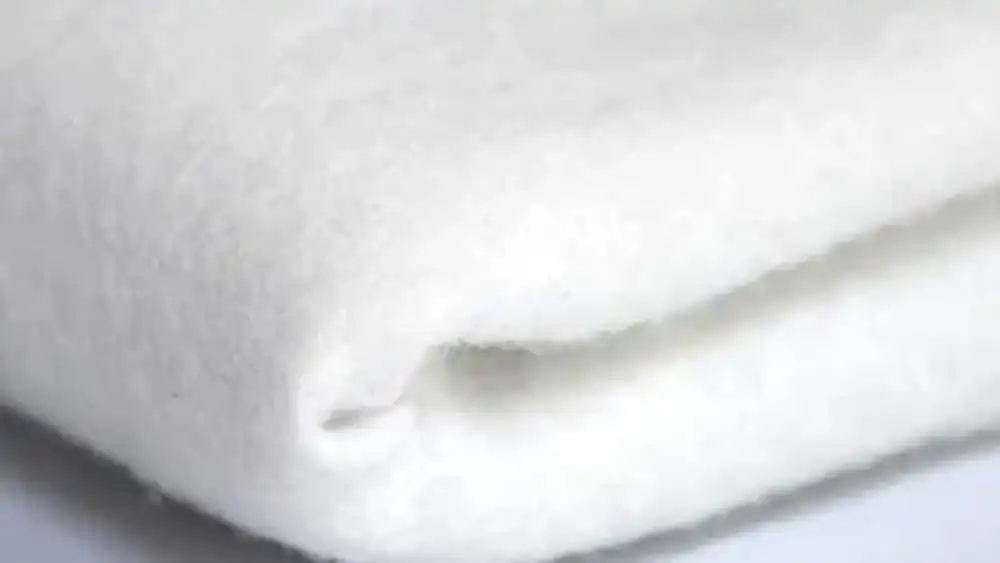
Batting fabric, often referred to simply as “batting,” is a layer of insulation used in quilting, sewing, and other crafts. It is typically sandwiched between two layers of fabric to create quilts, padded garments, and various types of home decor items like placemats and table runners.
The primary functions of batting fabric are to provide warmth, thickness, and texture to the finished product.
What is Cotton Batting
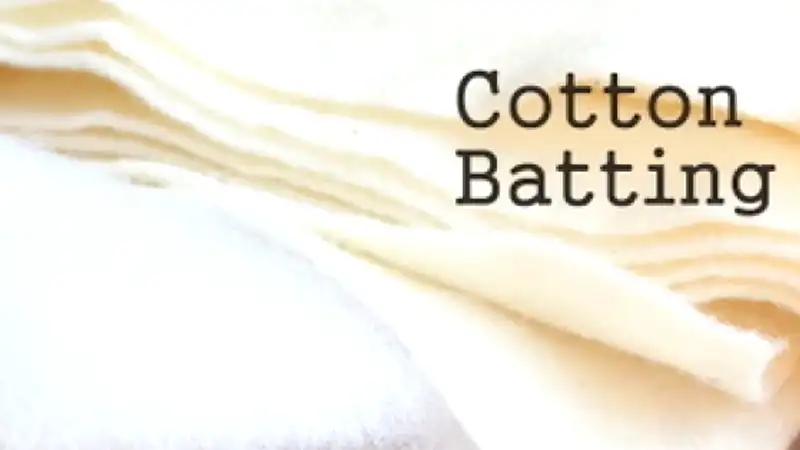
Cotton batting is a type of quilt batting made from natural cotton fibers. It is widely used in quilting and textile crafts due to its softness, breathability, and ease of use. Here’s a closer look at what cotton batting is and its key characteristics:
Characteristics of Cotton Batting:
Natural Material:
- Cotton batting is made from 100% cotton or a high percentage of cotton blended with other fibers.
- Being a natural material, it is preferred by many quilters for its eco-friendliness and sustainability.
Soft and Comfortable:
- Cotton batting is soft to the touch, making it comfortable for use in quilts, particularly those meant for bedding.
- It adds a gentle, cozy feel to quilts without being too bulky.
Breathable:
- Cotton fibers allow air to circulate, making cotton batting breathable.
- This breathability helps regulate temperature, keeping quilts cool in the summer and warm in the winter.
Low Loft:
- Cotton batting generally has a low loft, meaning it is relatively thin and flat.
- This makes it ideal for quilts where detailed stitching and patterns are desired, as it allows the quilting to be more pronounced.
Shrinkage and Puckering:
- Cotton batting may shrink slightly when washed, typically around 3-5%.
- This slight shrinkage can give quilts a charming, vintage, puckered look that many quilters appreciate.
Stability:
- Cotton batting is stable and does not shift or bunch up easily, making it easier to work with during the quilting process.
- It is suitable for both hand quilting and machine quilting.
Easy to Care For:
- Cotton batting is relatively easy to care for. It can be machine washed and dried, though it’s important to follow specific care instructions to minimize shrinkage and maintain its quality.
Uses of Cotton Batting:
- Quilts: Ideal for both lightweight summer quilts and heavier winter quilts.
- Clothing: Used in quilted jackets, vests, and other garments for added warmth.
- Home Decor: Suitable for quilted home decor items like table runners, placemats, and wall hangings.
- Craft Projects: Great for various craft projects requiring a soft, natural batting.
What Does Cotton Batting Look Like
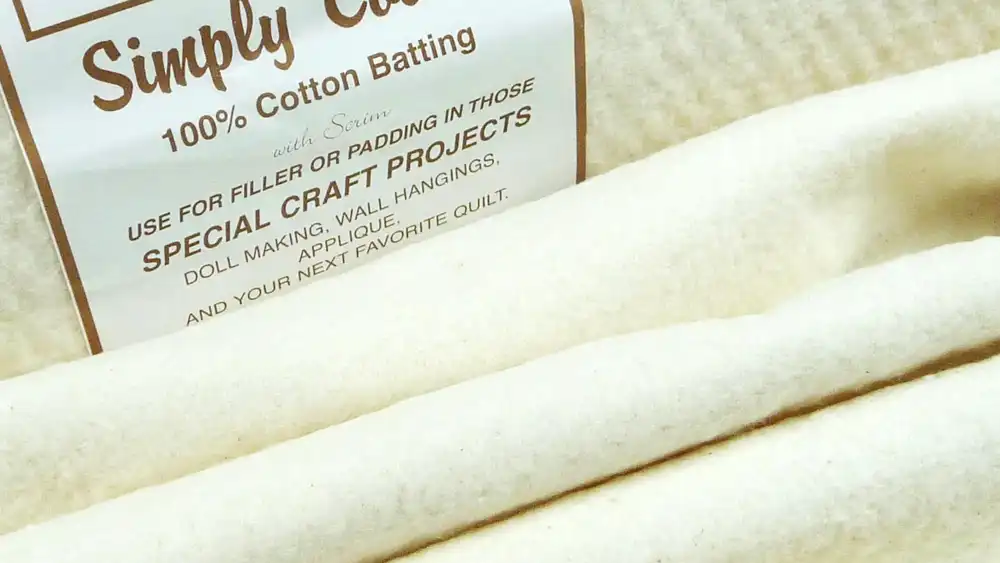
Cotton batting is typically a soft, fluffy material that comes in sheets or rolls. Here are some key characteristics of its appearance:
Appearance of Cotton Batting
Color:
- Usually off-white or cream in color, though it can sometimes appear slightly yellowish.
- Some cotton batting may be bleached to a purer white.
Texture:
- Soft and fibrous to the touch.
- Has a slightly uneven, natural texture due to the nature of cotton fibers.
- Can be smooth or somewhat fluffy, depending on the manufacturing process.
Thickness:
- Available in various thicknesses (loft), from very thin and flat to thicker and puffier options.
- Low-loft batting is thin and flat, making it ideal for detailed quilting.
- High-loft batting is thicker and provides more cushion and insulation.
Form:
- Comes in sheets or rolls, often folded for packaging.
- Can be found in pre-cut sizes for specific projects, like crib size, twin size, or full size quilts.
Density:
- Typically has a consistent density, though some areas may feel slightly more compressed due to packaging.
Identify cotton batting and determine if it’s the right material for your quilting or sewing project.
Types of Batting Fabric
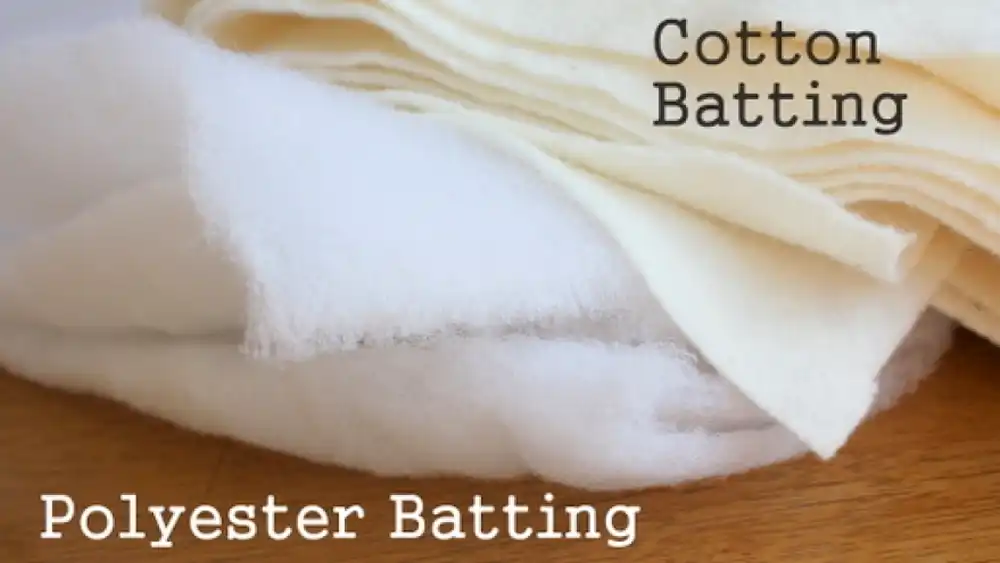
Cotton Batting
- Material: Made from natural cotton fibers.
- Characteristics: Soft, breathable, and has a low loft. It can shrink when washed, so pre-washing or pre-shrunk options are recommended.
- Best For: Quilts that need to be comfortable and breathable, especially in warmer climates.
2. Polyester Batting
- Material: Made from synthetic polyester fibers.
- Characteristics: Lightweight, durable, and retains its loft well over time. It has a higher loft compared to cotton and is non-allergenic.
- Best For: Projects requiring frequent washing, such as baby quilts and pet bedding, as well as machine quilting.
3. Wool Batting
- Material: Made from natural wool fibers.
- Characteristics: Warm, resilient, and naturally flame-resistant. It provides excellent insulation and moisture-wicking properties.
- Best For: High-quality quilts and blankets intended for colder climates and heirloom quilting projects.
4. Bamboo Batting
- Material: Made from bamboo fibers, often blended with cotton.
- Characteristics: Eco-friendly, soft, breathable, and naturally antibacterial. It drapes well.
- Best For: Eco-conscious quilting projects, items for people with sensitive skin, and lightweight quilts.
5. Blended Batting
- Material: A mix of different fibers, such as cotton and polyester or cotton and wool.
- Characteristics: Combines the benefits of different fibers, such as the softness of cotton with the durability of polyester. Offers a balance of loft, durability, and comfort.
- Best For: Versatile quilting projects that require specific performance characteristics, such as a mix of warmth, loft, and durability.
What is Batting Fabric Used For
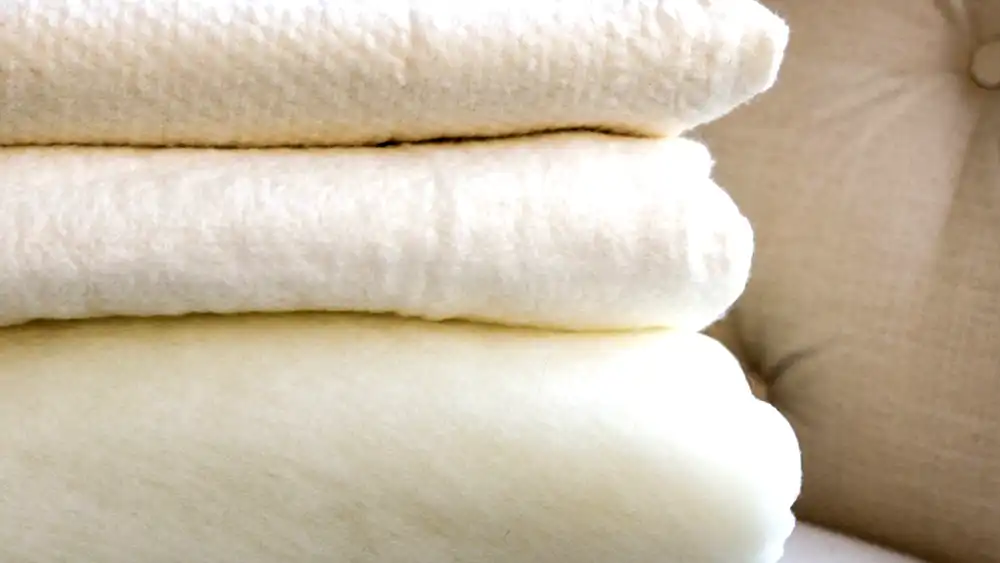
Batting fabric is a versatile material used primarily in quilting and sewing to provide insulation, thickness, and texture. Here are some common uses of batting fabric:
1. Quilting
- Warmth and Comfort: Batting is layered between the top fabric and the backing fabric in quilts to provide warmth and comfort.
- Thickness and Loft: It adds thickness and loft, giving quilts their characteristic fluffy and cozy feel.
- Structure: Helps in maintaining the structure and shape of the quilt.
2. Padded Clothing
- Insulation: Used in jackets, vests, and other garments to provide warmth and insulation.
- Comfort: Adds a layer of cushioning, making garments more comfortable to wear.
3. Home Decor
- Placemats and Table Runners: Provides padding and insulation to protect surfaces and add aesthetic appeal.
- Upholstery Projects: Adds padding to cushions, pillows, and other upholstered items, enhancing comfort and durability.
4. Craft Projects
- Bags and Accessories: Adds structure and padding to handmade bags, purses, and accessories.
- Wall Hangings: Provides the necessary padding and structure to quilted wall hangings, ensuring they hang well and maintain their shape.
5. Baby Items
- Baby Quilts and Blankets: Soft and breathable batting is used to make baby quilts and blankets comfortable and safe for infants.
- Play Mats: Adds cushioning to play mats, providing a soft surface for babies to play on.
6. Pet Bedding
- Comfort and Insulation: Used in pet beds and blankets to provide comfort and warmth for pets.
- Durability: Polyester batting, in particular, is durable and easy to clean, making it suitable for pet bedding.
Key Benefits of Using Batting Fabric:
- Insulation: Provides warmth and helps regulate temperature in quilts and garments.
- Thickness and Loft: Adds a desired level of thickness and fluffiness to quilts and other projects.
- Comfort: Enhances the comfort of padded clothing, home decor items, and bedding.
- Durability: Helps maintain the structure and durability of the finished product.
By incorporating batting fabric into various projects, you can achieve the desired level of warmth, comfort, and structural integrity, enhancing both the functionality and aesthetic appeal of the items you create.
What is the Purpose of Batting Fabric
The purpose of batting fabric is to provide insulation, thickness, and structural support in various quilting, sewing, and craft projects. Here are the key purposes of batting fabric:
1. Insulation
- Warmth: Batting is used to add warmth to quilts, blankets, and padded clothing, making them suitable for use in colder weather.
- Temperature Regulation: Helps regulate temperature in items like quilts and padded garments, ensuring comfort.
2. Thickness and Loft
- Puffiness: Batting gives quilts and other fabric projects their characteristic puffiness and loft, adding visual and tactile appeal.
- Cushioning: Adds a layer of cushioning, enhancing the comfort of items like quilts, jackets, and upholstered furniture.
3. Structural Support
- Shape Maintenance: Helps maintain the shape and structure of quilts, preventing them from looking flat or saggy.
- Durability: Adds strength and durability to projects, ensuring they withstand wear and tear over time.
4. Comfort
- Softness: Provides a soft, comfortable layer in quilts, garments, and home decor items, enhancing user comfort.
- Padding: Offers padding in items like placemats, table runners, and play mats, protecting surfaces and providing a comfortable user experience.
5. Aesthetic Enhancement
- Texture: Adds texture and depth to quilts and other fabric projects, enhancing their visual appeal.
- Craftsmanship: Contributes to the overall craftsmanship and quality of handmade items, giving them a professional finish.
Specific Uses
- Quilting: Essential for adding warmth, thickness, and structure to quilts.
- Padded Clothing: Used in jackets, vests, and other garments to provide insulation and comfort.
- Home Decor: Adds padding and structure to items like cushions, placemats, and table runners.
- Craft Projects: Provides support and padding in bags, accessories, and wall hangings.
- Pet Bedding: Ensures comfort and insulation in pet beds and blankets.
By using batting fabric, crafters and quilters can achieve the desired functionality, comfort, and aesthetic quality in their projects, making it a crucial component in a wide range of fabric-based creations.
Conclusion
Batting fabric is an essential material in quilting, sewing, and various craft projects, providing insulation, thickness, and structural support. There are several types of batting fabric, including cotton, polyester, wool, bamboo, and blended options, each offering unique benefits such as warmth, durability, breathability, and eco-friendliness.
Key Points:
- Types of Batting: Each type of batting fabric, whether cotton, polyester, wool, bamboo, or blends, has specific characteristics that make it suitable for different applications.
- Uses: Batting is primarily used in quilts, padded clothing, home decor, craft projects, and pet bedding to add warmth, cushioning, and structural integrity.
- Selection: Choosing the right batting depends on the project’s requirements, desired warmth, ease of care, and personal preferences.
Understanding the properties and applications of batting fabric allows crafters and quilters to make informed decisions, ensuring their projects are functional, comfortable, and aesthetically pleasing.
